Sight Words Teaching Strategy
A. See & Say
A child sees the word on the flash card and says the word while underlining it with her finger.
B. Spell Reading
The child says the word and spells out the letters, then reads the word again.
C. Arm Tapping
The child says the word and then spells out the letters while tapping them on her arm.
D. Air Writing
A child says the word, then writes the letters in the air in front of the flash card.
E. Table Writing
A child writes the letters on a table, first looking at and then not looking at the flash card.
Corrections Procedure
Correct a child’s mistake by clearly stating and reinforcing the right word several times.
1. Overview
Sight words instruction is an excellent supplement to phonics instruction. Phonics is a method for learning to read in general, while sight words instruction increases a child’s familiarity with the high frequency words he will encounter most often.
Use lesson time to introduce up to three new words, and use game time to practice the new words.
A sight words instruction session should be about 30 minutes long, divided into two components:
- Sight Words Lesson — Use our Teaching Techniques to introduce new words and to review words from previous lessons — 10 minutes
- Sight Words Games — Use our games to provide reinforcement of the lesson and some review of already mastered sight words to help your child develop speed and fluency — 20 minutes
2. Plan a Lesson
2.1 Introduce New Words
When first beginning sight words, work on no more than three unfamiliar words at a time to make it manageable for your child. Introduce one word at a time, using the five teaching techniques. Hold up the flash card for the first word, and go through all five techniques, in order. Then introduce the second word, and go through all five teaching techniques, and so on.
This lesson should establish basic familiarity with the new words. This part of a sight words session should be brisk and last no more than ten minutes. As your child gets more advanced, you might increase the number of words you work on in each lesson.
2.2 Review Old Words
Begin each subsequent lesson by reviewing words from the previous lesson. Words often need to be covered a few times for the child to fully internalize them. Remember: solid knowledge of a few words is better than weak knowledge of a lot of words!
Go through the See & Say exercise for each of the review words. If your child struggles to recognize a word, cover that word again in the main lesson, going through all five teaching techniques. If he has trouble with more than two of the review words, then set aside the new words you were planning to introduce and devote that day’s lesson to review.
Note: The child should have a good grasp of — but does not need to have completely mastered — a word before it gets replaced in your lesson plan. Use your game time to provide lots of repetition for these words until the child has thoroughly mastered them.
2.3 Reinforce with Games
Learning sight words takes lots of repetition. We have numerous sight words games that will make that repetition fun and entertaining for you and your child.
The games are of course the most entertaining part of the sight words program, but they need to wait until after the first part of the sight words lesson.
Games reinforce what the lesson teaches.
Do not use games to introduce new words.
NOTE: Be sure the child has a pretty good grasp of a sight word before using it in a game, especially if you are working with a group of children. You do not want one child to be regularly embarrassed in front of his classmates when he struggles with words the others have already mastered!
3. Sight Words Teaching Techniques
Introduce new sight words using this sequence of five teaching techniques:
- See & Say — A child sees the word on the flash card and says the word while underlining it with her finger.
- Spell Reading — The child says the word and spells out the letters, then reads the word again.
- Arm Tapping — The child says the word and then spells out the letters while tapping them on his arm, then reads the word again.
- Air Writing — A child says the word, then writes the letters in the air in front of the flash card.
- Table Writing — A child writes the letters on a table, first looking at and then not looking at the flash card.
These techniques work together to activate different parts of the brain. The exercises combine many repetitions of the word (seeing, hearing, speaking, spelling, and writing) with physical movements that focus the child’s attention and cement each word into the child’s long-term memory.
The lessons get the child up to a baseline level of competence that is then reinforced by the games, which take them up to the level of mastery. All you need is a flash card for each of the sight words you are covering in the lesson.
4. Correcting Mistakes
Of course, every child will make mistakes in the process of learning sight words. They might get confused between similar-looking words or struggle to remember phonetically irregular words.
Use our Corrections Procedure every time your child makes a mistake in a sight words lesson or game. Simple and straightforward, it focuses on reinforcing the correct identification and pronunciation of the word. It can be done quickly without disrupting the flow of the activity.
Do not scold the child for making a mistake or even repeat the incorrect word. Just reinforce the correct word using our script, and then move on.
5. Frequently Asked Questions
Q: Progress is slow. We have been on the same five words for a week!
A: It is not unusual to have to repeat the same set of words several times, especially in the first weeks of sight words instruction. The child is learning how to learn the words and is developing pattern recognition approaches that will speed his progress. Give him time to grow confident with his current set of words, and avoid overwhelming the child with new words when he hasn’t yet become familiar with the old words.
Q: Do I really need to do all five techniques for every word?
A: Start out by using all five techniques with each new word. The techniques use different teaching methods and physical senses to support and reinforce the child’s memorization of the word. After a few weeks of lessons, you will have a sense for how long it takes your child to learn new words and whether all five exercises are necessary. Start by eliminating the last activity, Table Writing, but be sure to review those words at the next lesson to see if the child actually retained them without that last exercise. If the child learns fine without Table Writing, then you can try leaving out the fourth technique, Air Writing. Children who learn quickly may only need to use two or three of the techniques.
Q: How long will it take to get through a whole word list? I want my child to learn ALL the words!!!
A: That depends on a number of factors, including frequency of your lessons as well as your child’s ability to focus. But do not get obsessed with the idea of racing through the word lists to the finish line. It is much, much better for your child to solidly know just 50 words than to “kind of” know 300 words. We are building a foundation here, and we want that foundation to be made of rock, not sand!
Leave a Reply

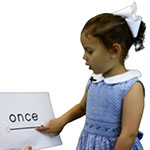
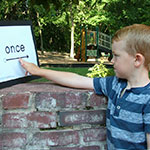
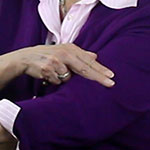
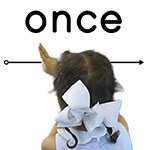
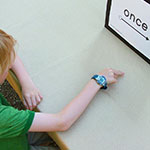
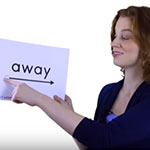
45 Responses to “Sight Words Teaching Strategy”
Kristina Demers
What age to start?
ADMIN – Hi Kristina,
You will have to calibrate based on your child. Do a couple of lessons, and if they want to learn, have the attention span, and they are able to grasp the material, keep on going. If not, pause for a few months before trying again. In developmentally normal children, I have seen this as early as three, and as late as five. Ideally I will start a year before they go to school, because I like my kids to be reading before starting school, but if a child is an earlier or a later bloomer I will let nature be my guide.
My only exception to this developmentally based timing is if a child is falling behind grade level. In that case, I would be a bit more pushy.
Rose Oram
Found this site to be very helpful, being a teacher of very challenged students who are struggling with reading and basic sight words. The games and instructions and other activities are great. I will certainly have lots of fun teaching my kids using these games and activities.
Raven
What is the name of that website? My son is really struggling with his sight words.
Carlos
https://sightwords.com/sight-words/dolch/
Linda Pennicooke
I will work these strategies, because they seem like logical ways to introduce and reinforce. Thanks very much.
Rasheedah
I like this website! I’m looking forward to start with my kids.
Nancy Williams
I’ve been looking for something like this for years. It allows me to create activities with the very words I’m teaching. I teach intervention to first grade students who are struggling to learn to read. I plan to share this site with my fellow teachers so they may enrich their instruction by using real strategies for teaching sight words. It is a multi-sensory approach that makes so much sense. I’m looking forward to using it this fall.
Ashley C.
When teaching a sight word do you apply all 5 strategies consecutively in one lesson, or use each strategy over the course of five days?
ADMIN – Hi Ashley,
We do recommend using all 5 teaching techniques consecutively in one lesson. The child will learn the words by repetition, and this will give him/her lots of repetitions of each word in a variety of ways. You may see after a while that your child has a firm grasp of a word after going through just 4 or even just 3 of the techniques. Then it’s okay to drop the last one or two techniques, but it depends on the particular child.
Charlotte Gamble
I would love to implement this in my teaching strategy. It will definitely enhance my children’s vocabulary as well as writing skills using words in complete sentences. However, how can I do this with a class of 3, 4 and 5 year-olds at different learning levels?
ADMIN – Hi Charlotte,
Since our games and flashcards are fully customizable, you can print exactly what you need to suit the needs of your particular students. Our games are best played in small groups, so you can divide up the children by reading level and give each group a game with a different word list. For our Fishing game, print different level words on different colors of paper. Then everyone can play together, with advanced kids “fishing” words on green paper, for example, and less advanced kids “fishing” the words on blue paper.
Grace
This is awesome. Thanks a lot. Now I can help the slow learners using this method.
Ann Marie Mc Donald
I enjoyed your presentation and really appreciate it!
bandana nath
Please give me the list of words for my five-year-old daughter…
ADMIN – Hi Bandana,
The Dolch sight words lists are the most commonly used in American schools. For a five-year-old, I would suggest you start by reviewing the Dolch Pre-Kindergarten word list. If she already knows those words really well, then you can move on to the Dolch Kindergarten words.
Brenda
Hi, I’m teaching English to third and fourth grade students, but English is their second language (Spanish being their first) so I would like to know if I can teach them the sight words with this 5 techniques, and which sight words list would you recommend for them? I want to teach them how to spell the words and how to write them.
ADMIN – Hi Brenda,
Yes, this would be a good way to help them start learning Sight Words. I would use the Dolch Sight Words list. Both Dolch and Fry are good starting points, representing the most commonly used words in English. The reason I prefer Dolch is that it is the most widely used in education and consequently has a lot more resources available for teachers and students.
Lady
Would you make any changes to these techniques if using them with a small group?
ADMIN – Hi there!
For small groups, the techniques are very similar. Go back and forth between having the children do the exercises as a group, and calling on specific children to do the exercise one at a time. The key is making sure no one falls behind without your noticing while the other kids in the group master the word and move ahead.
Kristina G.
Our school uses the Fry Words. We have many students that have met their grade level goal and have surpassed. Some even know all 1,000 words. My question is what to do when they know all of the sight words? I have suggested practicing spelling them, as well as using them in sentences for practice. Do you know of anything else?
Thank you in advance for any help you can give!
Kristina
ADMIN – Hi Kristina,
Those are great ideas for reinforcing and cementing students’ knowledge of the sight words. We also recommend encouraging the students in their reading habits. With a solid foundation of phonics and sight words, kids should be well on their way to fluency in reading!
Sujatha Chandrasekaran
Hello, I am very happy to find this website for the cause of children. Thank you so much for your detailed materials. I Have a 4.3 yr old kid. She is good in grasping language and math but She is finding it difficult to copy write. Earlier she was incomplete but now she is not even starting her work in school. Teacher non-cooperative.. I decided to take the charge and now teaching her basic phonics and the way to join the letters. what else could I do to make her see the board and copy the lessons with ease.
ADMIN – Hi Sujatha,
Try using our Teaching Techniques, especially Air Writing and Table Writing, to be sure your daughter understands the words she is supposed to be learning. If she does not have a problem learning the words, maybe the lesson simply needs to be more fun. Reinforce the lessons with one or more of our Sight Words games. She will get to play a fun game while at the same time getting plenty of practice working with her newly learned words.
sarah
i have been working with my daughter for last two years.she was a non reader.i used “look and say method” and associated the words with the pictures.
ana
I personally find the best way to learn sight words is watching videos.
For example my daughter love this video https://www.youtube.com/watch?v=qvnNKSQWMPU
it’s fun, have nice music and pretty pictures.
Summer
That’s 2 clever by half and 2×2 clever 4 me. Thanks!
katie woolsey
Very helpful blog for kids…thank you very much for sharing this……i have seen kids improve their word learning skills by playing some games and completing some amazing activities like some interesting games in here: http://goo.gl/PkXXNn
Jennifer W
I just found this website and can not wait to use these techniques with my child. What an awesome resource this website is! Thank You!!!!
cris
thank you…. this blog helped me a lot….
I was assigned to demonstrate some teaching strategies about sight words. can i ask for some advice if it’s okay ……thank you very much
Carolina
Hello,
How many words per lesson?
ADMIN – Hi Carolina,
It depends on the age and attention span of your child, but we generally recommend introducing 3-5 new words in a lesson. Go through all five teaching techniques with the first word, then repeat all five techniques with the second word, etc., to give your child plenty of repetition and lock the word into the child’s long-term memory. After introducing the new words, you may want to review some previously covered words and then play a game to reinforce the new and reviewed words.
Prachi Tripathi
Hello There,
I would like to know if this kind of activity will work for a child with borderline IQ. As I am working with children having learning disabilities. I try finding for and updating as many new activities and techniques I can to teach the sight words. Thank you.
ADMIN – Hi Prachi,
Actually, many of our teaching techniques were originally developed for children with learning disabilities. For children with lower than average IQ, we recommend spending lots of time on the Arm Tapping, Air Writing and Table Writing techniques. You should cover fewer words per session, with multiple, on-going review opportunities using a variety of the sight words games. The average child needs 4-14 exposures to a word for the word to stick. So children who struggle with reading need many more review and practice opportunities.
Kim
Began using this with students selected for summer services, kindergarteners going to 1st grade who knew less than 20 of the 60 kindergarten sight words. The students love the additional activities and for most it does help get the word into long term memory so they can remember it. The majority of these students have English as their second language, so I review words that have been learned, stopping if a word has been forgotten and focusing on that word. If they recall all of those words I introduce one more word. Three to five a day would be too overwhelming for them. We won’t get them to 60 by the time school starts, but they will know more than they do now.
ann
At what point would you expect the students to learn how to spell these words? Or would you? Thanks!
ADMIN – Hi Ann,
For every sight word you teach your child, we recommend you go through all five of our Teaching Techniques. Two of those techniques — Spell Reading and Arm Tapping — require the child to spell the word letter by letter. Two more — Air Writing and Table Writing require the child to say and write the letters of the word.
Britni
When teaching my child should I do all techniques with the same word and then move to the next word, or do I do one technique with all words and then move to the next technique?
ADMIN – Hi Britni,
Go through all five techniques with the first word, then go through all five techniques with the second word. Kids need lots and lots of repetition with each word for it to stick in their little brains!
Kathryn
Hi. We use the Jolly Phonics programme and this has word lists called tricky words. These are in cursive writing. Should our flashcards be in cursive and should children be joining the letters when air and table writing? Thanks for this fantastic resource.
ADMIN – Hi Kathryn,
Our philosophy is to focus on teaching one concept at a time, in this case memorizing the sight words. I would recommend teaching the printed (non-cursive) sight words as we demonstrate in our Teaching Strategies. After the children know the word itself, you can teach them how to read and write the same word in cursive.
Liz
My son’s teacher has begun with the very basic sight words (eg: the, for, is, etc), however, he does not know his letters yet. [He did not have a rigorous preschool curriculum]. I’m trying to figure out how to help him at home with the sight words, considering that he does not know the alphabet. Do you have any recommendations on how we can work on recognition of sight words given this impediment?
ADMIN – Hi Liz,
I’m afraid it’s impossible to learn to read without knowing your letters. You need to meet with your son’s teacher immediately to come up with a plan for helping him catch up with his classmates.
At home, play Bingo with your child, but instead of using sight words, type in individual letters so he can practice identifying the alphabet letters.
You and the teacher should also look at the second half of our Phonemic Awareness curriculum, starting with Word Families and Beginning Sounds. This will show you how to teach your son the letter sounds.
Ms. V
I absolutely LOVE this website! I teach special education and have a lot of students that need to learn the basics in reading. This is a great website to get any and all information you need to be successful at teaching the reading basics. I love the clips showing you how to correctly use the sight words and love all of the ideas for the games. There’s so much information that I visit this website multiple times during the day! Thank you for creating such a great way for Teachers and Parents to help their kiddos! I can’t complain that it’s totally free to use! I have recommended this website to all of my colleagues and to the families with special education children and those that aren’t and are just beginning to read! THANK YOU SIGHTWORDS.COM!!!!
Alia
Thank you so much!! I am a first year special education teacher who has been struggling with ways to introduce sight words to my students. I will definitely start implementing this in my classroom and at home with my child who needs the additional help.
Stephen Slates
Although research shows that sight recognition of words causes children to create a large bank of words and seems to speed reading growth, too much emphasis on sight-word instruction leaves students with little strategies for decoding unknown words. Our language is alphabetic and based in units of sound (phonemes). The majority of sight words are actually very decodable if students are taught the full extent of our language code. If I teach the word “has” for instance with all the strategies mentioned, what has the student learned? One word: “has”. But, if I teach them that s actually has two sounds, s and z, and often makes a z sound at the end of words, I open up the possibility for decoding hundreds of words. I prefer to teach the words phonetically first, if possible, and then reinforce afterwards so the student always knows to go back to the board and think about the code FIRST, before relying on context clues, pictures, and etc.
ADMIN – Hi Stephen,
We agree. You need sight words for speed, to have a base bank of words, and for phonetic irregularities. You need the decoding that comes out of phonemic awareness and phonics to be able decode new words. Hope you got the chance to check out our new Phonemic Awareness lesson plans.
Reema
I cannot believe the amount of data and material provided on this website solely for learning sight words! My daughter and I were having a difficult time learning sight words for school but I am looking forward to implementing these techniques now… Thank you so much!
Rachel
Some advice please….. I am a teacher and have been teaching sight words for years. My son has started school this year and has been given lists of words to complete for homework. He is given a group of 10 words at a time which he needs to be able to read (within 3 seconds without sounding out) and spell (without error) before he is given the next list. My question…. I have never made students in their first year of school spell words (in a spelling test setting) before they move on to a new list of words. In your opinion do you believe this will create ‘better knowledge’ of the words or hinder progress and confidence as you don’t seem to move as fast through the words?
ADMIN – Hi Rachel,
Sight words are, by definition, words that should be recognized almond instantly, not spelled almost instantly. The emphasis at his grade level should be on recognition, not reconstruction (spelling) when learning sight words. Otherwise, as you note, the task is slowed and overly laborious.. if possible, get the lists and teach them to him yourself. Then , he can focus on spelling later. The core purpose of learning sight words is to make reading, not spelling, more fluent. In other words, you are right!
Kezia
Thanks for all the great info!! I will be implementing this with my kiddos this school year. My only question is: “How long do you work on a set of words?”
ADMIN – Hi Kezia,
I work on a new set of words until they are mastered. After that, I will return to them occasionally so they don’t forget them. But, I never move onto new words before the old ones are mastered.
Tiffany
My daughter knows them but is having trouble writing them. What’s the best way to help her?
ADMIN – Hi Tiffany, Your daughter may visually and aurally recognize the sight words. She may correctly repeat or reproduce them orally. However, writing is a motor skill that requires proper hand-eye coordination, so to develop that skill, your daughter needs to practice writing using the five teaching techniques we explained. There is no shortcut to this. The more she practices, the more her “muscle memory” develops alongside her visual and aural recognition of the words.
GURUPRASAD C M
Are there any other strategies for teaching non-native English-speaking students?
ADMIN – Hi Guruprasad,
The techniques for teaching native English speaking kids should be the same for non-native speakers of English. Language learning is universal. The teaching strategies presented on this site apply for languages (that are read from left to right, that is, which explains the direction of the arrows under each word). For mastery, we recommend that you quiz your students with flash cards for the words you think they should know. You can use our card generator to create flash cards from a custom word list. Set aside any words the student stumbles on, and give those words further review using our five teaching techniques. Good luck!
Brittany
I am so grateful to have found this site, as I am teaching my daughter sight words and have struggled to find the best way to teach them, and finding techniques like these I am hoping will help. I will let you know. I do however want to know: are the dolch list for each grade on here standard, or the basic ones most schools use? I know that I can edit and add my own but I have read so many sites about CVC sight words being the sight words to do. I guess I just want to know if I am doing all I can for my daughter. If you can, please help. Thanks.
Kirsten
This site is wonderful, and I finally feel empowered to teach my children to read! Can you recommend how to pick which words to teach in a lesson (meaning, which 3 do I pick? Go in alphabetical order? order of frequency? a random 3 from the flashcards?). Is there a sequence to start teaching the Pre-K and K (Dolch) or first 100 (Fry) words that works best? Thanks for your help!
Lamari
Love reading Sight Words.
Tex Hooper
I think that is a great idea to incorporate writing with sounding out words. My 2-year-old is having trouble sounding out the “r” sound. I’ll have to get him a tutor to help him keep up with the other students.
Debbie Harwell
Would love to see some Science of Reading incorporated into these steps. How about sounding out phonetically, discovering the ‘tricky sounds’ , sounding out the word again- underlining/replacing the regular sound with the tricky sound.
Sight Words Admin
Hi Debbie, Most experts agree in the complementariness of Science of Reading, or Phonics, with Sight Words. Children will definitely get ahead faster with a good foundation of memorized Sight Words as well as the ability to decode and analyze unfamiliar or confusing sounds through Phonics. The strategies for teaching both are effective following their own discrete, tried and tested systems. However, nothing precludes parents and teachers from employing both strategies within close time ranges.
Gabriel Pérez
Hi! I’m a homeschooler father and found your site looking for resources for my kids’ classes. It is really helpful! I have a question. When I start teaching the sight words, should I begin in the exact order that the words appear in the PDF, or could I organize it as I want to? I know some things need to be taught — or are easy to learn — following a certain order, and I’m wondering if it is the same with sight words.
ADMIN – Hello, Gabriel. Glad we can be of help! As to your question, you do not need to teach sight words in the exact order presented. For instance, some teachers/parents teach the Fry or Dolch lists alphabetically. Others create their lists according to their preferred order.
Ekändém-Akpanesö
Thanks for your site. Language teaching may be universal; however, teaching in the rural African community where English is not used for communication is quite challenging.
Please, we need help.
Any assistance would do.